What happens when a dog carries instincts so sharp that a single sound can shift its entire state of mind? Rare hunting dogs with strong prey drive offer that answer with absolute clarity.
Their bodies respond before thought, guided by patterns built long before any human companionship. They study movement with a kind of intelligence rooted in sensation rather than decision. The moment something races across their vision, instinct takes the lead.
Their rarity makes their behavior less familiar to most people, and that unfamiliarity often creates a sense of awe. These dogs process the world differently. They calculate, pursue, and commit with a focus that feels unwavering. Their drive is not scattered or impulsive. It moves with purpose shaped by generations of selective refinement.
As you explore the coming sections, you will see how these instincts shape their behavior, their challenges, and the unique qualities that set them apart.
Rare Hunting Dog Breeds Prone to Prey Drive
1. Plott Hound

A Plott Hound draws attention with its athletic frame and striking brindle patterns that set it apart on any trail. The breed is known for a confident expression that hints at its sharp instincts and bold nature. Its roots as a relentless hunting dog shaped a drive that reacts instantly to scent, movement, and challenge.
Purpose-Built for Pursuit
Centuries of game tracking shaped the Plott into a determined chaser with a focused mindset that awakens the moment a trail appears. As per the AKC, this intensity is tied directly to its exceptional prey drive, making it one of the most responsive scent hounds in demanding terrain.

Instincts That Stay Active
Inside the home, the Plott shifts into a calmer rhythm, yet that hunting mindset never completely settles. It stays alert to movement and environmental cues, which can surprise people who only see its mellow side. This blend of gentleness and intensity is what places it firmly among the breeds prone to strong prey-driven reactions.
Note: The Plott Hound is North Carolina’s official state dog, a recognition earned through its long-standing reputation as an exceptional big-game hunter.
2. Segugio Italiano
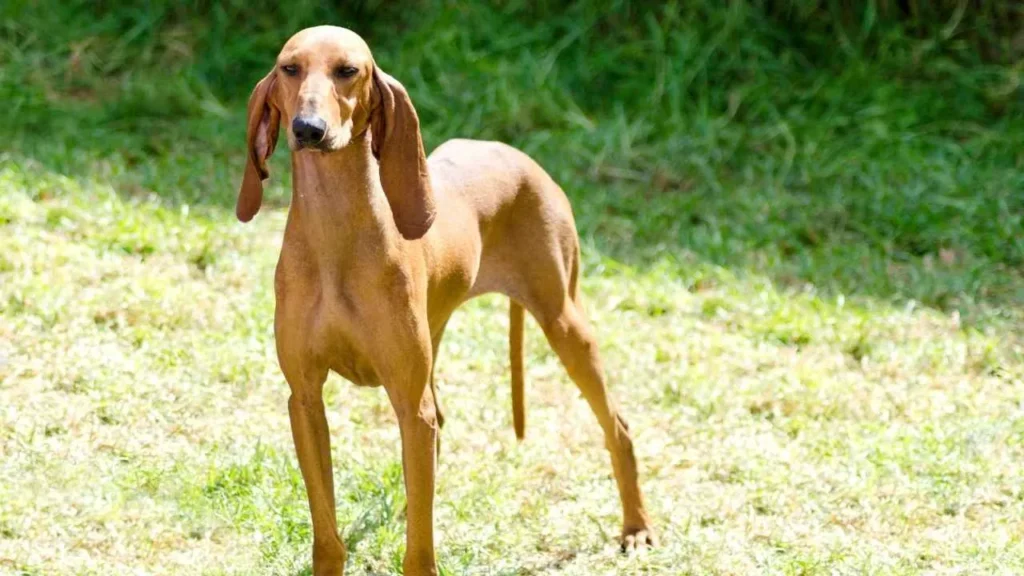
Graceful movement is one of the first things people notice about the Segugio Italiano, and this effortless agility shapes how it behaves during a hunt. Its balanced posture and light-footed stride help it track fast-moving scents with a focus that rarely breaks.
Endurance That Shapes Behavior
Long days outdoors never seem to wear this dog down, and that enduring energy influences how quickly it reacts to scent trails. Its stamina blends with sharp intelligence, creating a hunter that reads terrain faster than most breeds of similar size.
Attentive Nature Around the Home
Calm manners help the Segugio Italiano settle indoors, yet its alertness never goes fully quiet, as Omlet highlighted. The same focus it uses in the field makes it responsive to unusual sounds or movements, giving families a dog that notices changes before anyone else does.
3. Otterhound

An Otterhound’s incredible nose sets the tone for its entire working style, picking up trails that linger long after the animal has passed. Its large, textured nose works almost like a natural tracking device, letting it follow scent across water or dense terrain.
Water-Driven Hunting Instinct
This breed’s enthusiasm for swimming shapes much of its hunting mindset, thanks to its rough waterproof coat and strong, steady strokes in the water, as per Britannica. An Otterhound can stay focused on a moving target long after other breeds would lose interest.
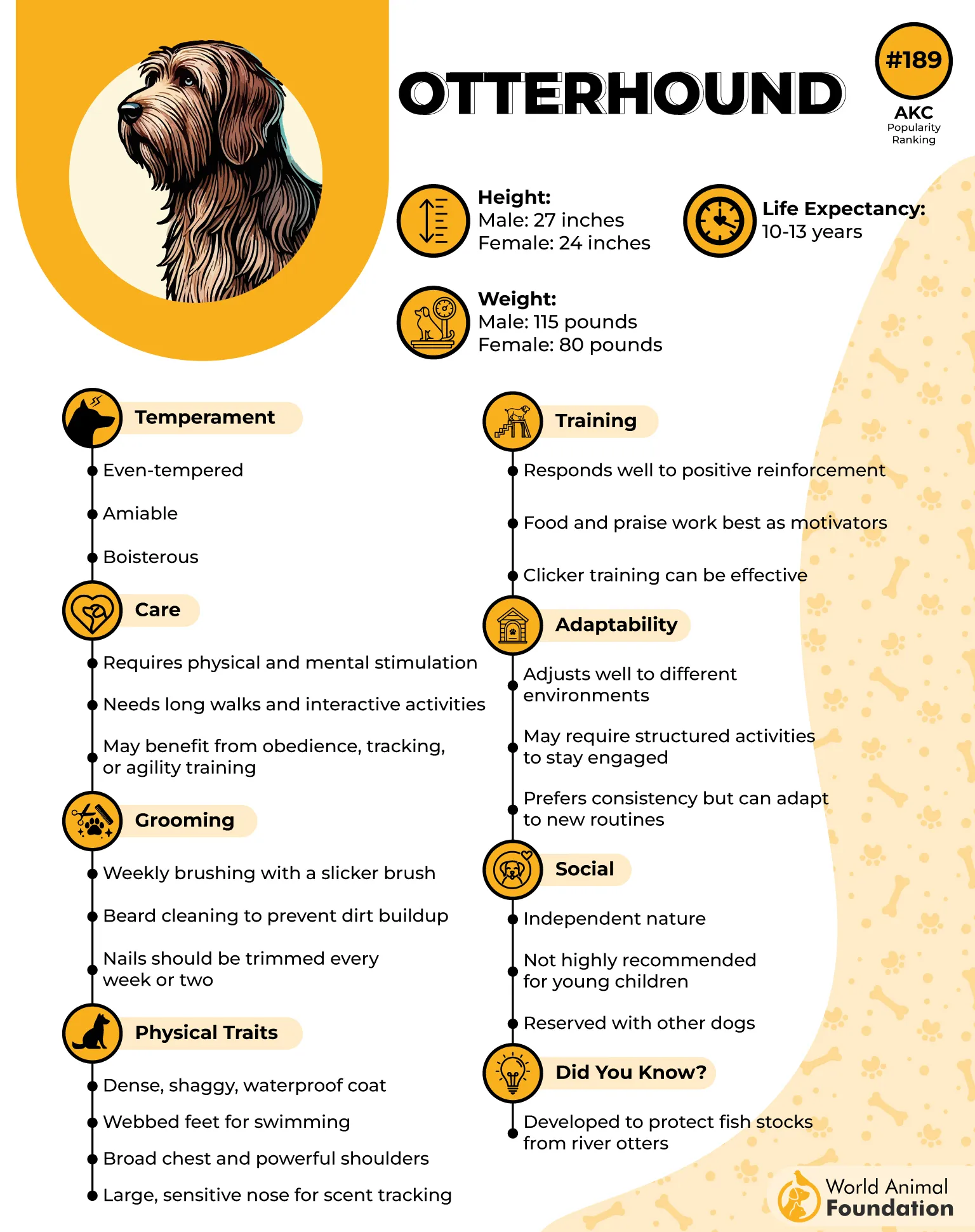
Bold Approach to Moving Targets
Its broad chest and powerful shoulders help it push through streams and marshy ground without slowing down, keeping the chase active even in difficult terrain. These physical advantages reinforce its natural desire to follow fast, slippery prey.
Note: Otterhounds are one of the rarest dog breeds in the world, and are rarer than the Giant Panda.
4. Kishu Ken
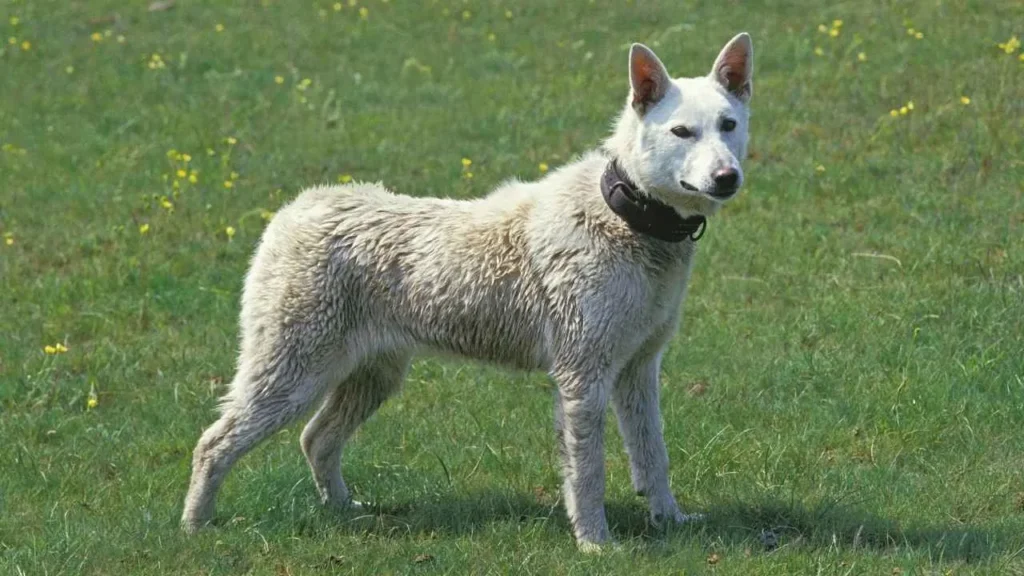
A Kishu Ken is known for its calm steadiness, an inner composure that shows even in dense cover. This centered nature plays a role in how it approaches scent, sound, and movement during a chase.
Its alert expression and purposeful steps show the controlled intensity that often fuels its prey drive in rough landscapes.
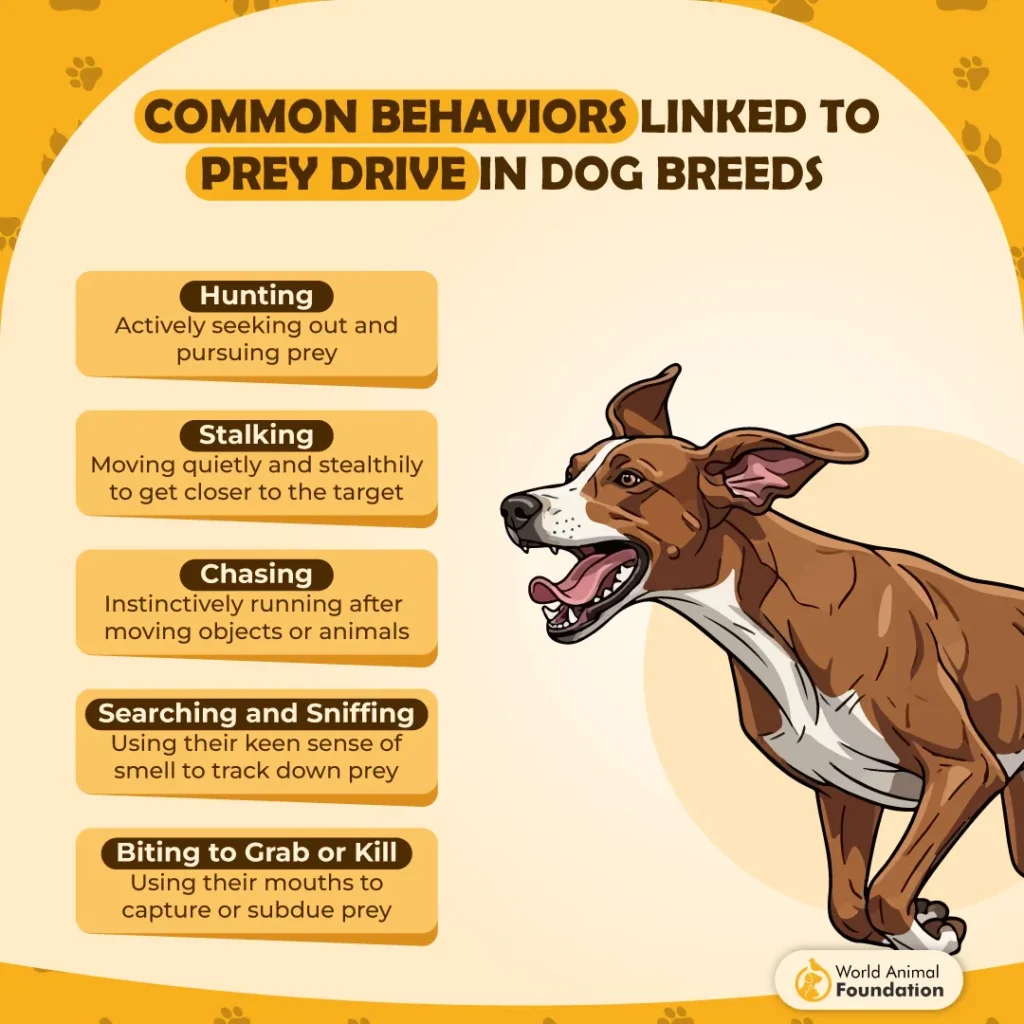
Instinctive Drive in the Field
The breed has a long history of working as a hunting companion, relying on sound judgment when tracking large game. Their rustic build and impressive endurance help them navigate thick forests where prey disappears quickly.
Discerning Nature Around Animals
Kishu often develops a thoughtful approach around familiar animals, though quick motions can trigger interest faster than in other dogs.
Their alert temperament supports this sensitivity, especially in stimulating environments. Consistent outlets for mental stimulation help them stay balanced when their instincts begin to rise.
5. Bavarian Mountain Hound
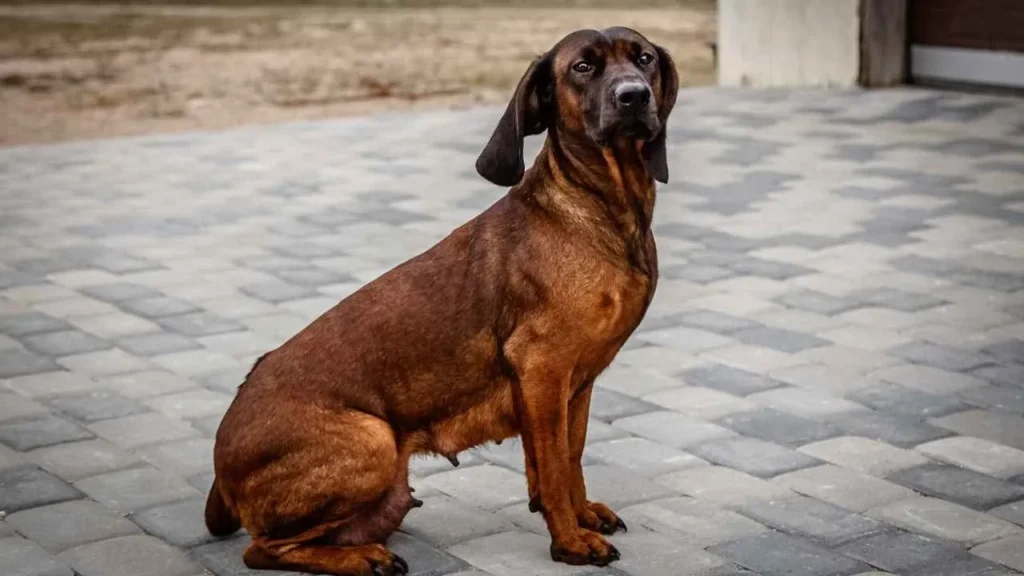
This breed is known for its coolheaded nature, which helps it stay focused during long searches through forests and steep ground. Its ability to follow faint trails makes it especially valued for recovering wounded game during deer hunting.
A Nose Built for Difficult Trails
The Bavarian Mountain Hound is famous for what experts call a “cold nose,” meaning it can read scent particles long after they settle. This skill allows it to separate the scent of an injured animal from other animals in the same area without hesitation.
Steady Temperament
Its calm and self-assured attitude prevents overreaction when the trail gets complicated. This steadiness supports the breed’s strong prey drive by keeping its actions controlled rather than chaotic. The dog stays highly responsive to its handler, which is crucial during long tracking sessions in dense cover.
Note: The breed is not suited to kennel-style living and works best when kept near its human partner, a trait repeatedly mentioned by breed authorities.
6. Catahoula Leopard Dog
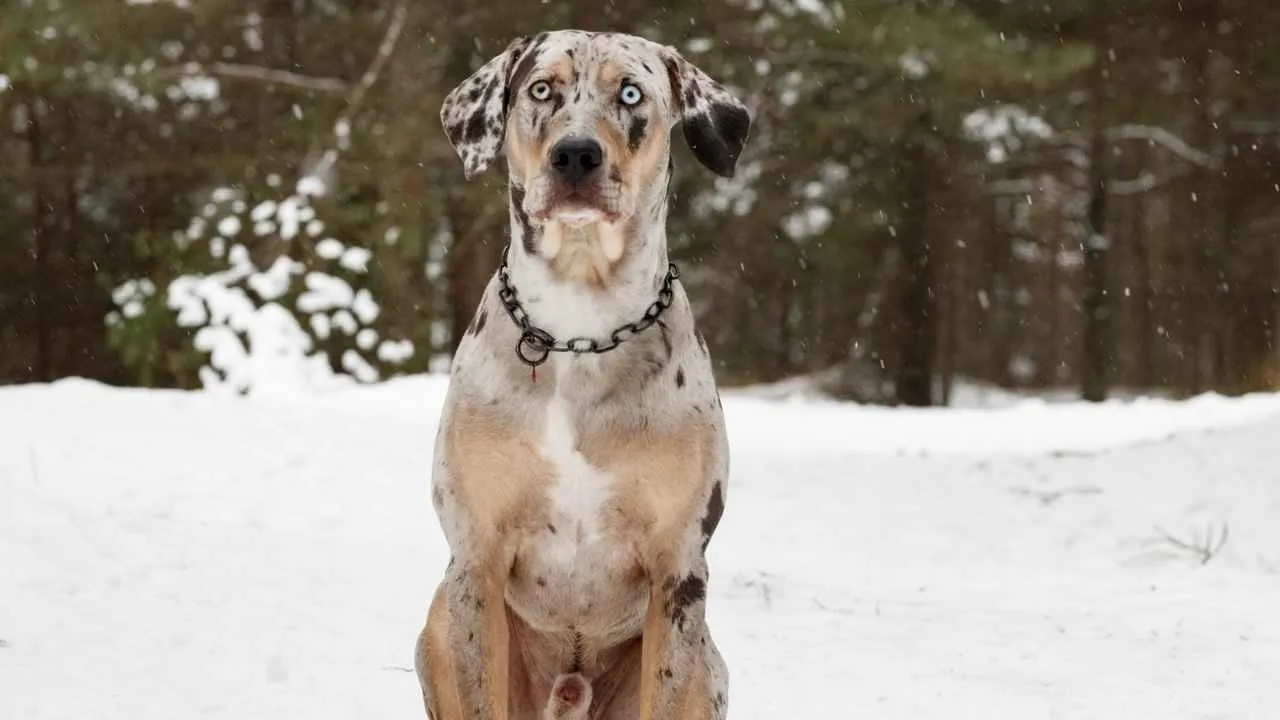
A Catahoula Leopard Dog moves with a focused mindset, especially when a task demands precision. Its muscular body supports quick turns and sudden bursts of speed that fit the role of a determined hunting partner. These qualities shaped its reputation among dog owners who appreciate a dog that can read terrain with confidence.

Instincts Wired for Pursuit
Its alert nature gives it an advantage in dense forests where movements of wild animals often go unseen. The breed’s mix of power and agility supports the persistence needed in catching prey, and its serious working attitude helps it stay on track.
Protective with a Steady Backbone
Firm guidance helps this breed understand boundaries without dulling its natural working spirit. It forms strong bonds once it understands family structure and responds with steady loyalty. Its territorial streak plays a role in how seriously it watches over space and movement around the home.
7. Norwegian Elkhound

This breed’s confident nature shows from the moment it steps into open terrain, where its alert presence instantly sharpens. The Norwegian Elkhound has long been recognized for a steady temperament that stays firm even in challenging weather.
Energy That Never Drops Off
This breed carries a level of stamina that allows it to work through long distances with high energy. Its thick coat and sturdy frame help it stay comfortable in cold climates, encouraging extended activity outdoors. These qualities make the Elkhound a dog that needs proper training to guide those urges in a safe direction.
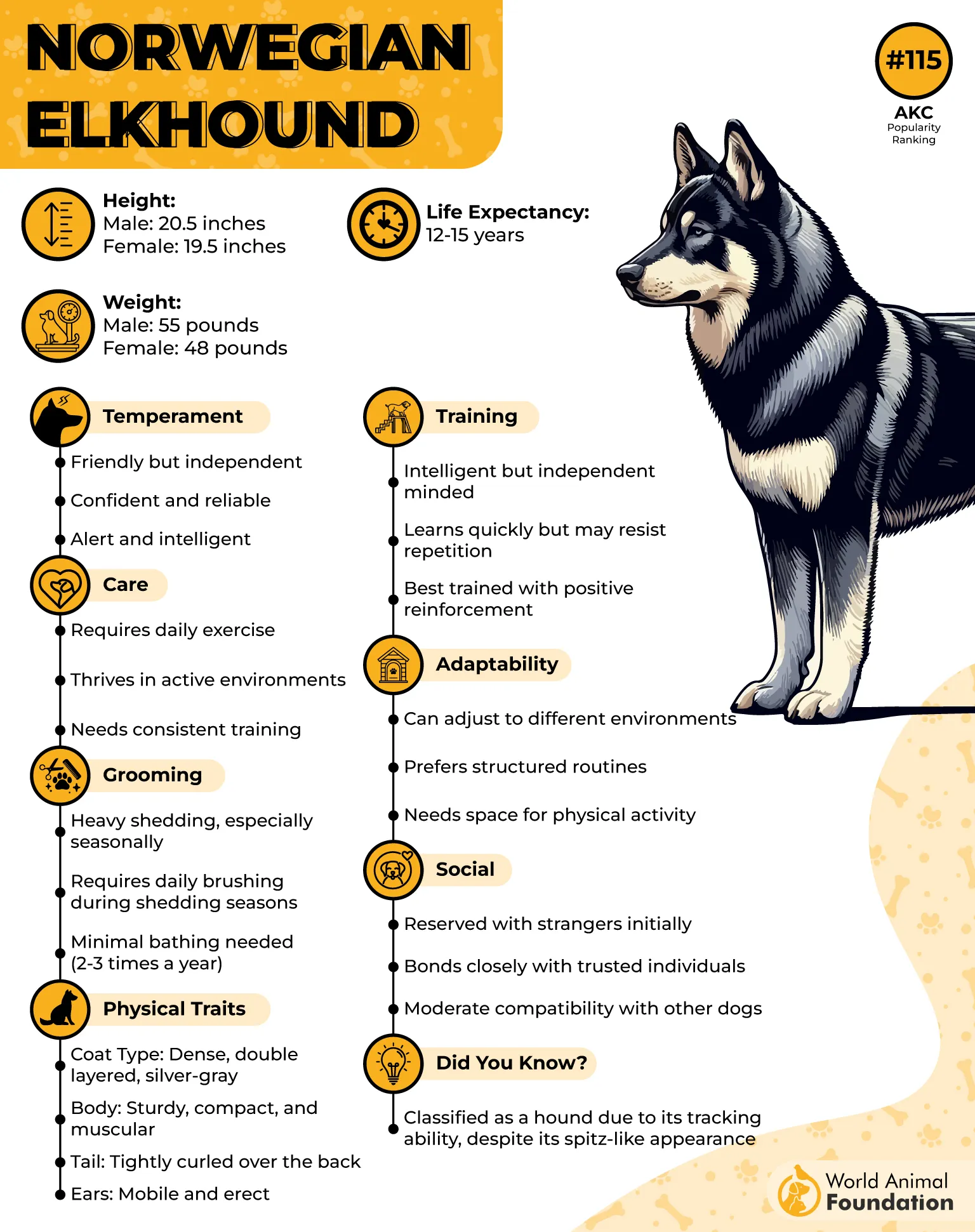
Refined Awareness During Pursuits
Their sharp eyes and quick reactions create a natural rhythm during fast-moving situations. Even when working independently, they remain attentive to cues in their surroundings.
This blend of physical ability and steady mindset often results in a dog that picks up subtle movement faster than other hunting breeds.
FAQs
1. Can a rare hunting dog with a strong prey drive still be safely kept around smaller pets?
Yes, but only with careful management, structured training, and strict supervision, since their instincts can activate quickly.
2. How does a high prey drive affect training for rare hunting breeds?
It makes training more focused on impulse control, consistency, and redirecting their natural drive into controlled tasks.
3. How can owners recognize strong prey drive instincts in rare hunting dogs?
Quick reactions to movement, intense staring, tracking behavior, and sudden bursts of focus are common early signs.
Conclusion
These rare hunting dogs show how instinct can shape every part of daily life, yet many still learn to live with calm purpose when given structure. They are not always fantastic family dogs, but with guidance, they can grow into wonderful family companions for active homes.
Their reactions to small animals require steady supervision, especially since high prey drive dogs respond quickly to motion. Some adapt into good family dogs when routines are clear and consistent. Their nature as guard dogs appears in decisive moments, and an intelligent breed that is eager to please often becomes a steady family companion.


